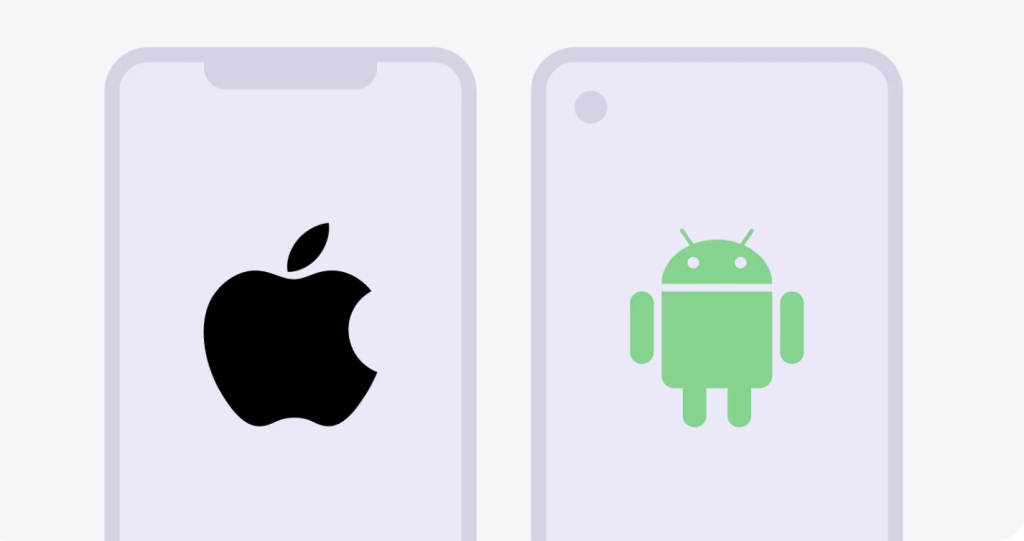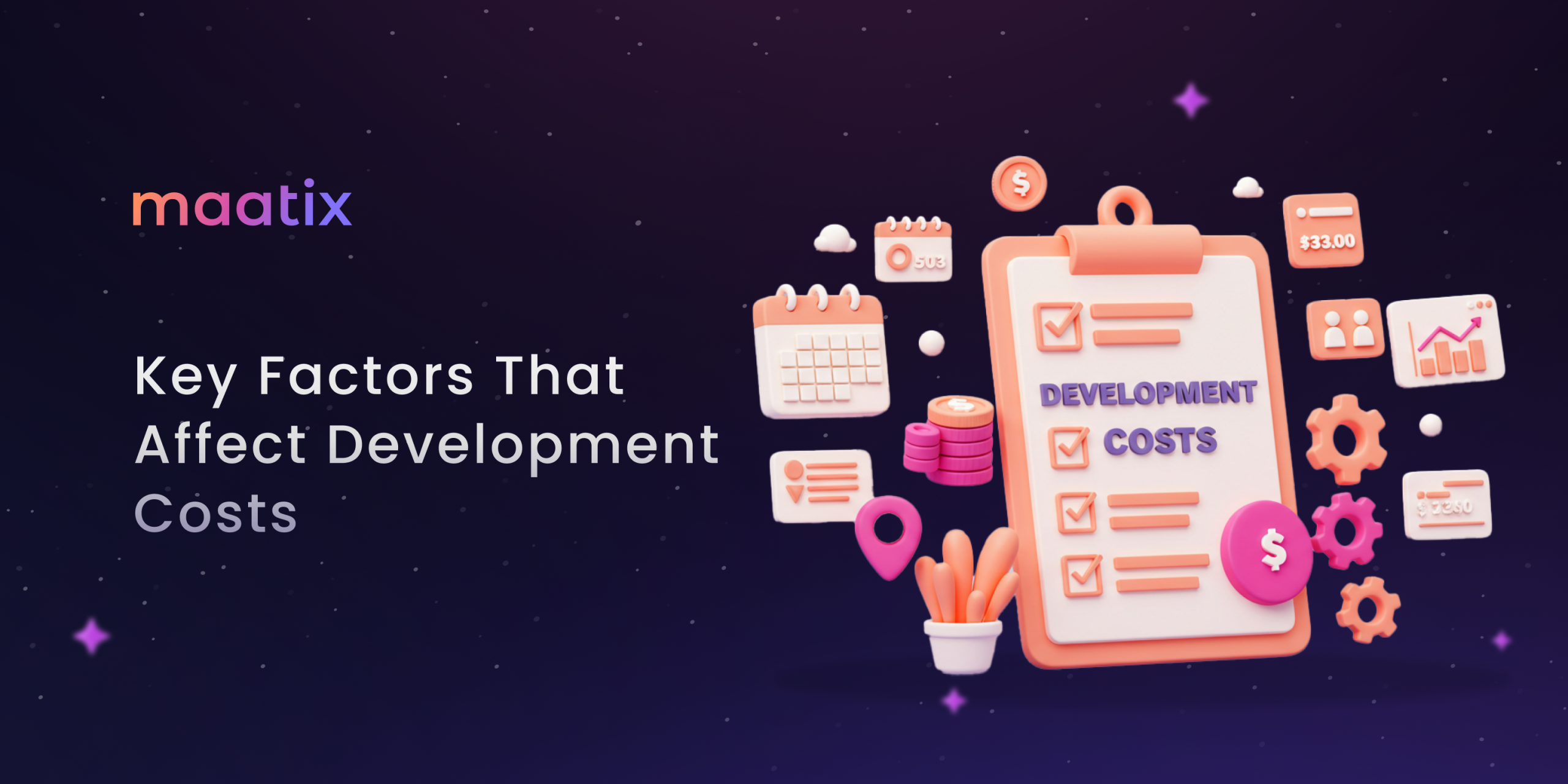If you’re planning to build a custom application, you’ve probably asked yourself this question more than once. The truth is, app development costs can vary a lot, depending on several important factors. In this guide, we’ll walk you through what really impacts the price, so you can set your budget with confidence. From design to features, we’ll cover the key elements that could make a big difference to your investment.
The app market has been growing nonstop since day one, and it’s showing no signs of slowing down. That’s why more and more startups, entrepreneurs, and established businesses are pouring resources into building web and mobile apps to match the ever-changing needs and habits of their users.
However, developing an app is no small investment, especially for small and medium-sized businesses. And without the right balance between cost and value, a brand-new app could end up falling short of expectations. So, how do you figure out the real cost of app development to plan your budget wisely?
To make things simple, we’ve put together a clear, step-by-step guide to calculating app development costs. In this article, you’ll learn exactly how much it can cost to create an app, the key factors that drive those costs, and practical tips to cut expenses without sacrificing quality. Ready to get started? Let’s dive into the essentials of app development pricing.

Average app development cost estimates
The cost to develop an app can range anywhere from $40,000 to $300,000 or more, it all depends on the app’s complexity, features, design, and other important factors. Because every project is unique, there’s no one-size-fits-all price tag. The best way to get a realistic estimate is to break down each cost component, so you can see the full picture of what goes into building your app.
Before diving into development, the first step is to clearly define your app’s requirements and key features. Ask yourself: Is it a video streaming app or a social networking platform? What specific functions and user interactions will it include? Who will you hire for the development,freelancers, an in-house team, or a mobile app development company? Having a solid understanding of your business goals and user expectations will help you visualize the final product and predict potential costs more accurately.
While developers can’t give you an exact app development cost from a brief description, they can provide a realistic estimate based on factors like app type, complexity, and the development process. Keep in mind there may be additional expenses during the project, such as updates or feature adjustments. The more detailed and specific your ideas are from the start, the closer your cost estimate will be to the actual budget required to bring your app to life.
Key Factors That Impact App Development Costs
You’ve probably seen plenty of online app cost calculators claiming to give you the exact price for building an app. But here’s the truth, there’s no one-size-fits-all formula for this. That’s because app development costs depend on many factors, from design and features to platform and complexity. The best way to get an accurate estimate is to break down the cost structure and assess each part step by step.
1. App complexity
One of the biggest factors that influence the cost of developing an app is its complexity. Simply put,the more complex the app, the more time, expertise, and resources it takes to build, which naturally increases the price.
When we talk about complexity, we’re not just referring to the number of screens or buttons. It includes things like user interface (UI) design, third-party integrations, custom features, and security requirements, among others. Each of these elements adds to the scope of the project, and your budget.
Here’s a general breakdown of app development costs based on complexity:
- Simple Apps: $40,000 to $80,000
These are straightforward applications with core features like user registration, login systems, and a basic dashboard or profile. Examples include small utility apps, fitness trackers, weather apps, mini-games, or simple task management tools. - Moderately Complex Apps: $80,000 to $200,000
Apps in this range often include features like push notifications, real-time messaging, and social media integration. Examples: dating apps, food delivery platforms, e-commerce stores, or social networking apps. - Highly Complex Apps: $200,000+
Large-scale, feature-rich apps, often for enterprise, healthcare, finance, or logistics, can exceed $350,000. These may include AI-powered tools, virtual reality elements, or extensive custom features tailored to specific industries.
While complexity is a major cost driver, it’s not the only factor. To get a true picture of your app development budget, you’ll need to consider it alongside other important elements, such as platform choice, maintenance, and ongoing updates.

2.Platforms You’ll Need
Choosing the right platform for your app is one of the first steps toward estimating your development costs. The platform you choose has a big impact on both budget and timeline. For example, if you plan to launch a mobile version on iOS, you’ll likely build a native app designed specifically for the App Store audience.
Building for multiple platforms separately usually means a higher budget because of the extra time and work involved. Many startups begin with one platform, either iOS or Android, and expand later as they grow. On the other hand, if you have the resources to launch on both from day one, it can give your app a much broader reach.
Here are the main types of apps to consider:
- Native apps: Built for a single platform using its own programming language.
- Cross-platform apps: One codebase, multiple platforms.
- Web apps: Accessible through any web browser, no download needed.
- Hybrid apps: A blend of native and web technologies.
The most popular app platforms today are the Apple App Store for iOS and Google Play Store for Android. Pricing is generally similar for both, often starting around $50,000 and up, so you can choose to focus on one or target both to maximize your app’s reach.
Not sure which direction to take? Our team offers expert iOS app development and Android app development services. Whether you need a sleek, high-performance iOS app or an engaging Android experience, we’ll help you bring your vision to life while keeping your project on budget.

3. Features and functionalities
When figuring out the cost of developing an app, one of the biggest factors is the features and functionalities you choose to include. Every extra feature can add thousands of dollars to your development budget, plus weeks or even months of extra work.
A smart approach is to focus on core features first, the ones your app truly can’t function without , and then add more advanced capabilities in later versions. This keeps your initial costs manageable while ensuring you deliver a solid, user-friendly product.
Common App Features & Functionalities (with Estimated Costs)
- Native device features: Bluetooth, camera, microphone, Face ID
- User login: Email login, phone number login, password recovery
- Admin/user management: Profile details, profile photo, language, settings
- Messaging: Online status, file sharing, group chat, message replies
- Notifications: Push notifications, reminders, app updates
- Location services: Maps, user location, pickup/delivery settings
- Payments: Payment gateways, multiple methods, transaction history
- Device synchronization: Data sync across multiple devices
- Data security: Encryption (symmetric/asymmetric), hashing
For example, a simple login feature might cost around $1,000, while complex features like video calls can go beyond $10,000.
By carefully selecting the features that best match your app’s purpose and enhance the user experience, you can keep production costs reasonable without sacrificing quality or industry standards.
4. Custom design
When it comes to mobile app development, the in-app visual design and customization aren’t just about making things look pretty—they directly impact user engagement and your app’s success. A well-crafted UI/UX design not only attracts users but also keeps them engaged, boosting your conversion rates.
It’s also worth factoring in branding costs, which can include creating your logo, app icon, animations, and custom illustrations. These elements help your app stand out in the crowded marketplace and make a lasting impression.
How Much Does Custom App Design Cost?
The price of custom design depends on several factors:
- The number of app screens
- The complexity of visual elements, such as animations
- The level of personalization required
For example, a simple mobile app design with basic UI/UX elements might cost between $15,000 and $20,000, taking around 400 hours of design work. On the other hand, more complex projects with detailed layouts, advanced animations, and highly personalized visuals can exceed $20,000 and require 400–500 hours or more to complete.
Full-Service Mobile App Design
Following the best practices in UI/UX design, our mobile app design services cover the entire process,from initial research to final testing. We handle:
- Market research & competitor analysis
- Wireframing & UI mockups
- Brand identity creation
- Custom animations & illustrations
Our goal? To create highly customized, visually stunning designs that capture users’ attention instantly and keep them coming back.
5. Back-End Infrastructure
Think of the back-end infrastructure as the engine that powers your app. While the front-end is what users see and interact with , like visuals, buttons, and text, the back-end quietly works behind the scenes to make everything run smoothly. It handles database management, server-side logic, network connections, and all the essential technology that keeps your app functional. A stronger, more advanced back-end means better performance, but it can also increase development costs.
Our back-end development services are perfect for businesses that want a reliable, secure, and high-performing app. Our experienced developers use the latest security measures and cutting-edge tools to build, test, and optimize your product before launch. The result? A seamless user experience powered by a scalable, future-ready infrastructure, all designed with smart cost management in mind.
App Development Cost by Stage
When planning your app budget, breaking down the application development cost by stages is one of the smartest moves you can make. This approach gives you a clear picture of how much you’ll spend at each milestone, making your financial planning easier and your progress more trackable.
Let’s walk through the five main stages of app development costs, starting with the very first step.
1. Discovery & Planning Stage
The journey to building a successful app begins with discovery and planning,a stage dedicated to exploring ideas, researching the market, and creating a solid strategy. Think of this phase as laying the foundation for your entire project.
During this stage, your product owner, developers, and sometimes designers will collaborate on key activities such as:
- Business analysis: Understanding your goals, target audience, and unique value.
- Market & competitor research: Finding your edge by studying trends and rivals.
- User research: Ensuring your app is intuitive and user-friendly.
- Product validation: Confirming your idea meets market demand.
- UI/UX audit: Evaluating existing designs or features for improvement.
The main costs here include research, concept creation, usability testing, and prototype design. On average, discovery stage costs range between $3,000 and $7,000, though complex projects can go beyond $10,000.
Why is this step worth it? Because a well-researched and validated plan can save you from costly mistakes later and help you launch faster.
Making the Most of Discovery & Planning
By investing in professional product research services, you get more than just a plan, you get expert guidance. This includes:
- Clear project objectives
- Market positioning advice
- Risk management strategies
- Competitor analysis
- Mood boards and visual concepts
- Detailed user flows
Our team ensures your discovery phase is not only productive but exciting, setting you up for long-term app success.

Leave a Reply